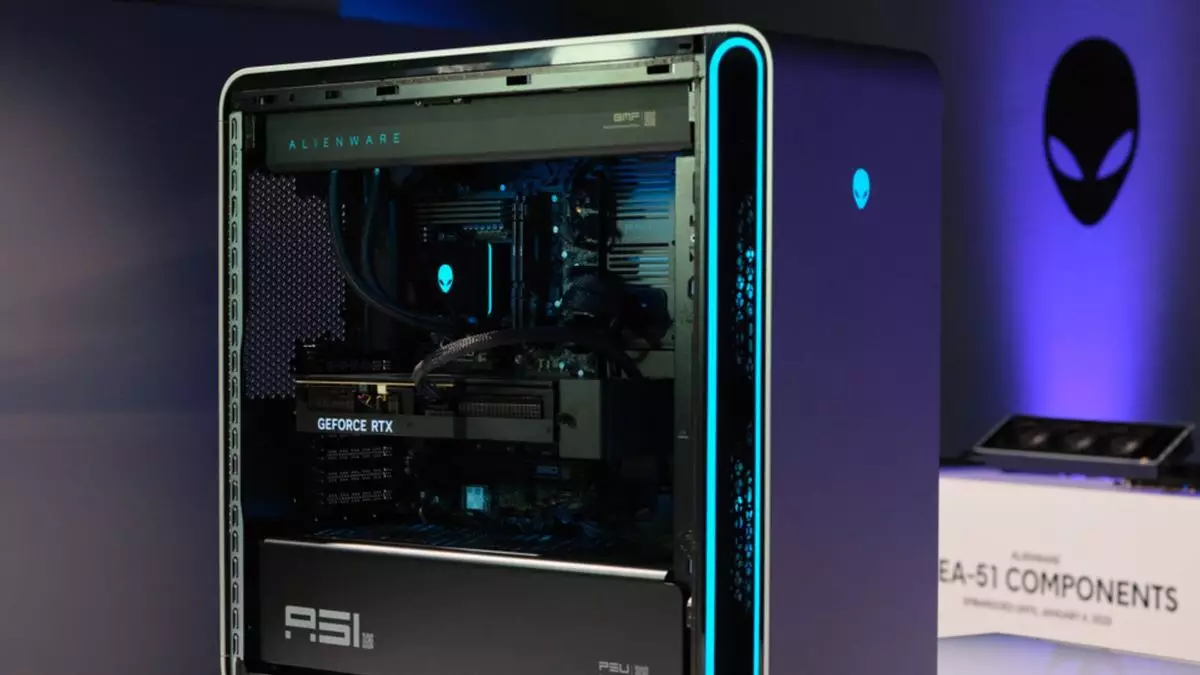Alienware has long stood at the intersection of innovative design and high-performance gaming hardware. Their latest offering, the Area-51 desktops, generated significant buzz at CES. With claims of being the “quietest, coolest running, and highest performance desktop” in the brand’s history, these rigs boast cutting-edge features like the latest RTX 50 series graphics cards and superior airflow designs that promise to elevate the gaming experience. On paper, the Area-51 seems to usher in a new era for Alienware, one that prioritizes not just aesthetics but the functional needs of serious gamers. However, as with many things that shine brilliantly on the surface, a closer examination reveals cracks beneath the glossy exterior.
The Upgrade Dilemma
At the core of the excitement surrounding the new Area-51 is the notion of upgradeability. Alienware appears to embark on a commendable mission to provide gamers with modularity—a common desire among PC enthusiasts. However, the reality is tinged with disappointment. To fully realize this potential, users are confronted with the additional expense of a $35 AlienFX board cable conversion kit. This kit is necessary to bridge the connection between the Area-51 chassis and any non-Aliens motherboard, underscoring an inconvenient caveat to the promise of a fully upgradeable rig.
The inclusion of a wiring kit, complete with power switch cables and USB extensions, feels less like a bonus and more like a barrier for entry. The necessity of understanding this added cost before making a purchase may deter potential buyers who expected a seamless transition between different hardware components. This decision leaves an aftertaste for a product that, despite its promising upgrades, seems to compound the complexity rather than simplify the upgrade process.
Positives Buried Beneath Caveats
Despite the frustrations, it’s crucial to acknowledge where Alienware excels. The thermals, characterized by a positive pressure airflow system, suggest that the rigs will experience a decreased buildup of dust and heat—an important factor for gamers who utilize their systems for prolonged periods. Moreover, the claim of these desktops running 45% quieter signifies a thoughtful exploration of user experience; a quiet gaming setup can often lead to more immersive sessions.
Yet, the shining features could be further bolstered with a more transparent approach regarding limitations. The announcement concerning the compatibility of only certain motherboards lacks adequate clarity and may leave many users navigating confusion during their upgrade paths. Given the growing community of DIY enthusiasts, transparency in hardware compatibility is paramount, yet remains conspicuously underaddressed by Alienware.
Assessing Market Implications
In an era where gamers are increasingly enticed by customizable setups, the hesitance to fully embrace a broad range of upgradeable components leaves Alienware in a precarious position. The gaming landscape is brimming with brands eager to provide seamless modular solutions, and the hesitancy from Alienware could inadvertently encourage consumers to explore alternative platforms that prioritize user versatility.
This duality of progress reflects a common narrative in the tech space: the struggle to balance innovation while adhering to commercial interests. The Area-51 line, while showcasing impressive advancements and architectural ingenuity, nonetheless stumbles on its potential for user empowerment and flexibility. The need for drivers of change lies not solely in hardware prowess but also in creating systems that effectively balance accessibility with performance.
Beyond the Surface
Ultimately, Alienware serves as a reminder that while aesthetics and powerful specs are essential, real success hinges on user experience. The interplay between hardware versatility, pricing transparency, and real-world usability must be taken into account. The Area-51 desktops showcase a forward-thinking layout and technological advancements, yet the shadows of structural limitations provide a sobering counterpoint to its brilliance. Overcoming these hurdles is integral for the brand’s evolution; if Alienware truly aims to redefine what a gaming rig can be, then it must ensure that its innovations are felt not just on the surface but in the hands of the gamers who will wield them.


Leave a Reply